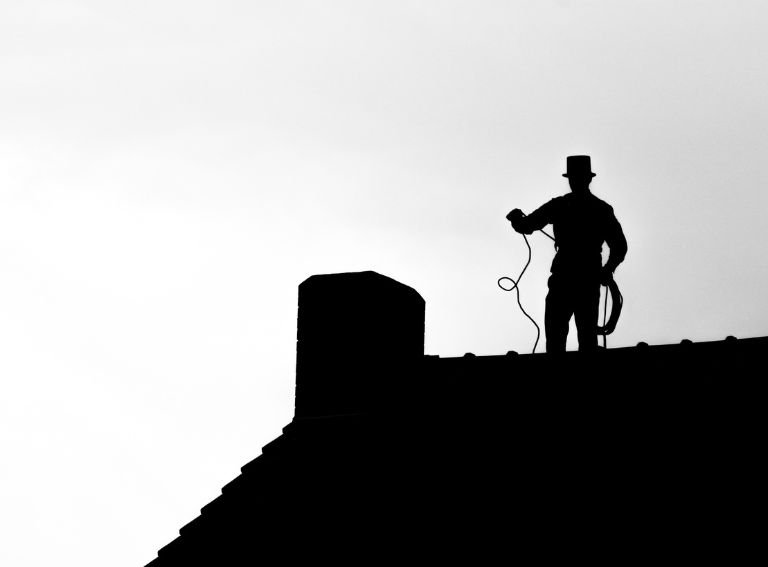Fall in Connecticut isn’t just about leaves and cooler air—it’s also your last good chance to prep your roof before winter hits hard. Snow, ice, and wind can turn small roof issues into big, expensive problems fast.
Let me explain—your roof takes a beating all year, but winter brings the real test. Loose shingles, clogged gutters, or hidden leaks that go unchecked now could lead to water damage, ice dams, or sudden repairs in the middle of a snowstorm.
The good part? Most fall maintenance tasks are simple, don’t take much time, and can save you thousands in the long run.
So read on—this checklist walks you through what to inspect, what to fix, and what to upgrade now, so your roof stays strong through another New England winter.
Why Fall Roof Maintenance Matters in Connecticut
Connecticut’s weather shifts fast in the fall. One week it’s sunny and mild, the next it’s freezing rain or even snow. That quick change is rough on roofs—especially older ones.
Let me explain—when temperatures bounce above and below freezing, trapped water expands and contracts. This freeze-thaw cycle pries open cracks, loosens shingles, and weakens seals. By the time snow sticks, your roof might already be leaking.
Heavy snow loads are another problem. Wet snow piles up fast and adds thousands of pounds of pressure. If your roof has soft spots or drainage issues, it can sag or leak under the weight.
And it’s not just snow—wind plays its part too. Fall storms in Connecticut often bring strong gusts that tear off loose shingles, rattle flashing, and blow debris straight into your gutters. Then come the leaves. They pile up fast and clog drainage, trapping water where it shouldn’t be.
Additionally, insulation and ventilation matter too. Poor airflow in the attic traps warm air below the roof, melting snow from underneath. That melted water refreezes near the edges, forming ice dams that back up under shingles and into your home.
Unchecked debris is another silent threat. Wet leaves, pine needles, and bird nests can hold moisture against your roof, feeding mold and rot before winter begins.
So read on, fall isn’t the best time to prep your roof. In Connecticut, it’s your last chance to avoid damage before snow and ice take control.

Full Fall Roof Maintenance Checklist
Your roof doesn’t need to be perfect; it must be ready.
This checklist walks you through simple, high-impact steps that protect your home before the first snow hits.
1. Inspect Roof Surface and Shingles
Spot problems before the weather makes them worse.
- Look for missing, cracked, curling, or buckled shingles.
- Pay close attention to roof edges, valleys, vents, and skylights—these areas break down first.
- Use binoculars from the ground. Climbing isn’t worth the risk unless you know what you’re doing.
2. Clean and Clear Gutters and Downspouts
Gutters clogged with leaves and sticks don’t just overflow—they damage your roof and siding.
- Scoop out debris by hand or use a blower.
- Flush downspouts with a hose to check for clogs.
- Tighten loose brackets and realign sagging sections for proper drainage.
3. Check for Moss, Algae, and Roof Debris
Moisture-loving growth can break down shingles fast.
- Look for green fuzz, black streaks, or anything growing where it shouldn’t.
- Use a roof-safe moss cleaner, skip pressure washing, it can do more harm than good.
- Clear off branches, acorns, or nests that hold moisture against the roof surface.
4. Inspect Flashing and Sealant
Flashing failures are one of the top causes of fall and winter leaks.
- Examine metal flashing around chimneys, skylights, valleys, and vents.
- Look for rust, gaps, or anything lifting away from the roof.
- Reseal cracked or dried caulk with exterior-grade sealant.
5. Check Your Attic and Ceilings
Water damage often starts inside—long before you notice it.
- In the attic, look for damp insulation, dark stains, or soft wood.
- A musty smell usually means trapped moisture.
- Make sure vents are working and soffits aren’t blocked—poor airflow causes condensation and ice dams.
6. Trim Back Trees and Overhanging Branches
Even healthy trees can cause major roof damage.
- Cut back limbs so nothing hangs within 6–10 feet of your roofline.
- Prevents leaves from piling up and animals from getting too close.
- Reduces risk of falling branches during storms or heavy snow.
7. Know Your Roof’s Age and Schedule Repairs
Older roofs need more than a quick glance.
- If your roof is 15–20+ years old, get a professional roof inspection before winter sets in.
- Fix loose shingles, damaged flashing, or minor leaks now—don’t wait for snow to expose them.
- Some repairs can be handled daily, but they save you months of stress.

Optional Upgrades to Consider Before Winter
If you want to go beyond basic maintenance, a few smart upgrades can make your roof stronger, safer, and easier to manage through Connecticut’s rough winter.
Install Gutter Guards
Gutter guards stop leaves, pine needles, and debris from clogging your gutters when you need them most.
- Reduce the need for constant fall cleaning.
- Keep water flowing away from your roof, even during heavy rain or melting snow.
- Best types for Connecticut homes: stainless steel micro-mesh or heavy-duty aluminum guards, especially for homes surrounded by trees.
Improve Insulation and Ventilation
Good airflow and insulation do more than save energy, they protect your roof structure.
- Proper attic insulation keeps heat where it belongs and stops snow from melting unevenly on your roof.
- Good ventilation prevents warm air buildup that can cause ice dams, condensation, and mold inside the attic.
- Bonus: Better energy efficiency means lower heating bills all winter long.
Install Roof Heating Cables
If your home has a history of ice dams, heating cables are a game-changer.
- They melt snow along the roof’s edge, keeping water flowing off instead of refreezing into dangerous ice dams.
- Installed along eaves, valleys, and gutters where ice tends to form first.
- Best installed before the first freeze, not after snow is already piling up.
Upgrade Roof Fasteners and Flashing
If you’re replacing any part of your roof this fall, ask about storm-rated fasteners and heavy-duty flashing.
- Stronger fasteners help shingles resist heavy winds and winter storms.
- Upgraded flashing lasts longer and seals out melting snow better than standard materials.
Add Attic Fans
Adding an attic fan can help move trapped warm air out quickly if your attic ventilation is weak.
- Solar-powered fans are a smart, energy-efficient choice.
- Helps balance indoor temperatures and reduces the chance of condensation or ice buildup on your roof.
Investing a little now can save you from big-ticket repairs, insurance claims, or even mid-winter emergency roof work when contractors are booked solid.

When to Call a Roofing Professional
Some roof tasks are easy DIY wins. Others? Not worth the risk. Knowing when to call in a pro can save time, money, and your safety.
What You Can Do Yourself
- Visual inspections from the ground with binoculars
- Cleaning gutters and downspouts
- Removing light debris like leaves and branches
- Spotting attic moisture, stains, or drafts
If you’re comfortable on a ladder and know your limits, minor fixes like resealing caulk or trimming small branches may also be doable.
When It’s Time to Call a Pro
- You see missing shingles, sagging areas, or signs of structural damage
- Flashing is rusted, bent, or loose around vents and chimneys
- There’s water in your attic or ceiling stains you can’t trace
- Your roof is 15+ years old and hasn’t had a recent inspection
- You’re unsure what you’re looking at or just want peace of mind before winter
Let me explain, climbing onto a roof without training or safety gear can go wrong fast. Roofing contractors have the tools, experience, and insurance to do the job safely and correctly the first time.
Finding a Trustworthy Roofer in Connecticut
- Choose local: Look for companies with strong reviews in your town or county
- Make sure they’re licensed and insured in CT
- Ask about seasonal discounts, emergency winter availability, and whether they offer a written inspection report.
- Don’t wait until snow is falling, fall appointments fill up fast
Pro Tip:
Even if your roof looks fine from the ground, a pro can catch minor issues early, before snow and ice turn them into major repairs.
Don’t hesitate to reach out to Hira Roofing for all your roofing needs.
Conclusion
Your roof doesn’t need attention every day, but it does this season.
Fall gives you a short, perfect window to catch problems while they’re still small. A loose shingle today might be a leak in January. A clogged gutter now could be ice damage by Christmas. These aren’t big fixes, they’re brilliant timing.
And here’s the real value: prepping your roof in the fall isn’t just about avoiding damage—it’s about buying peace of mind. When the snow starts falling, you’ll already know your home is protected. No stress, surprises, or scrambling for a roofer after the storm.
So whether you’re grabbing a ladder or calling a pro, now’s the time. Use the checklist, make the upgrades, and get ahead—because in Connecticut, winter doesn’t wait.




